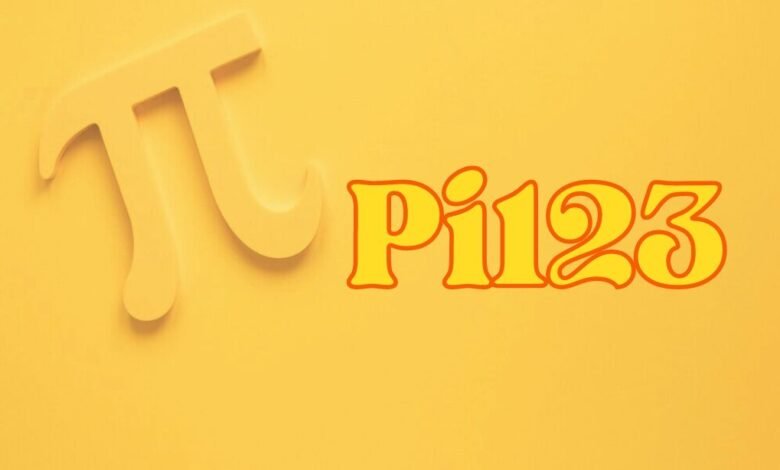Exploring the Mysteries of Pi123: Unraveling its Significance and Applications

Few constants are as enigmatic and ubiquitous in mathematics as π (pi). However, today, we delve not into the familiar π but into its lesser-known counterpart, Pi123. While π has long been celebrated for its role in geometry and calculus, Pi123 emerges as a fascinating yet lesser-explored mathematical entity. In this article, we embark on a journey to unravel the mysteries surrounding Pi123, exploring its significance and potential applications across various fields.
Understanding Pi123: An Overview
Pi123, often denoted as π₁₂₃, is a mathematical constant that extends the concept of π. It is defined as the ratio of the circumference of a circle to its diameter in a space with non-Euclidean geometry, particularly in hyperbolic spaces. Unlike π, which is confined to Euclidean geometry, Pi123 finds its relevance in non-traditional geometrical contexts, presenting intriguing mathematical challenges and opportunities for exploration.
Historical Perspective
The exploration of Pi123 traces back to the early 20th century when mathematicians began delving into non-Euclidean geometries. Pioneers such as Henri Poincaré and Bernhard Riemann laid the groundwork for understanding geometries beyond the familiar Euclidean space, opening doors to studying constants like Pi123. Pi123 remained relatively obscure despite its historical significance compared to its more celebrated counterpart, π.
Mathematical Properties of Pi123
Pi123 possesses unique mathematical properties that distinguish it from π. Unlike the ethereal nature of π, Pi123 exhibits intriguing algebraic properties, making it a subject of interest for mathematicians exploring hyperbolic geometries. Its precise value remains elusive, often requiring sophisticated computational techniques for approximation due to the complex nature of hyperbolic spaces.
Applications in Mathematics
While Pi123 may seem abstract, its applications extend beyond theoretical mathematics. In hyperbolic geometry, Pi123 is a fundamental constant for calculating the geometric properties of objects in non-Euclidean spaces. From understanding the geometry of hyperbolic surfaces to modeling complex structures in theoretical physics, Pi123 is vital in advancing our understanding of spatial geometries beyond the confines of Euclidean norms.
Exploring Pi123 Beyond Mathematics
The influence of Pi123 transcends traditional mathematical domains, finding applications in diverse fields ranging from computer science to art and architecture. In computer graphics, Pi123 facilitates the creation of hyperbolic tessellations, enabling the generation of intricate patterns and designs with aesthetic appeal. Moreover, architects and designers draw inspiration from hyperbolic geometries, incorporating elements influenced by Pi123 into innovative structural designs.
Challenges and Future Directions
Despite its potential, the exploration of Pi123 presents several challenges and unresolved questions. The computation of its precise value remains an ongoing endeavor, requiring advanced mathematical techniques and computational resources. Moreover, understanding the implications of Pi123 in theoretical physics and cosmology poses intriguing yet unanswered questions, hinting at new avenues for interdisciplinary research.
Conclusion
In conclusion, Pi123 is a fascinating mathematical constant with profound implications across various disciplines. From its roots in hyperbolic geometry to its computer science and design applications, Pi123 continues to captivate the minds of mathematicians, scientists, and artists alike. As we delve deeper into the mysteries of Pi123, we unravel new layers of understanding, enriching our appreciation for the complexities and beauty of mathematics in its diverse forms.
Frequently Asked Questions (FAQs) About Pi123
Q1. How is Pi123 different from Pi (π)?
While π is well-known and applicable in Euclidean geometry, Pi123 finds its relevance in non-traditional geometrical contexts, such as hyperbolic spaces. Pi123 possesses unique algebraic properties and is a fundamental constant in hyperbolic geometry.
Q2. What are the historical origins of Pi123?
The exploration of Pi123 can be traced back to the early 20th century when mathematicians began studying non-Euclidean geometries. Pioneers like Henri Poincaré and Bernhard Riemann laid the groundwork for understanding hyperbolic spaces, paving the way for learning constants like Pi123.
Q3. What are the mathematical properties of Pi123?
Pi123 exhibits intriguing algebraic properties and is essential for calculating the geometric properties of objects in hyperbolic spaces. Its precise value remains elusive, often requiring sophisticated computational techniques for approximation due to the complexities of non-Euclidean geometries.
Q4. Are there practical applications of Pi123?
Yes, Pi123 has applications beyond theoretical mathematics. In computer graphics, it facilitates the creation of hyperbolic tessellations and intricate patterns. Additionally, architects and designers draw inspiration from hyperbolic geometries influenced by Pi123, incorporating them into innovative structural designs.
Q5. What are the challenges associated with studying Pi123?
One of the main challenges is computing the precise value of Pi123, which requires advanced mathematical techniques and computational resources due to the complexities of hyperbolic spaces. Furthermore, understanding its implications in theoretical physics and cosmology presents intriguing yet unanswered questions.




